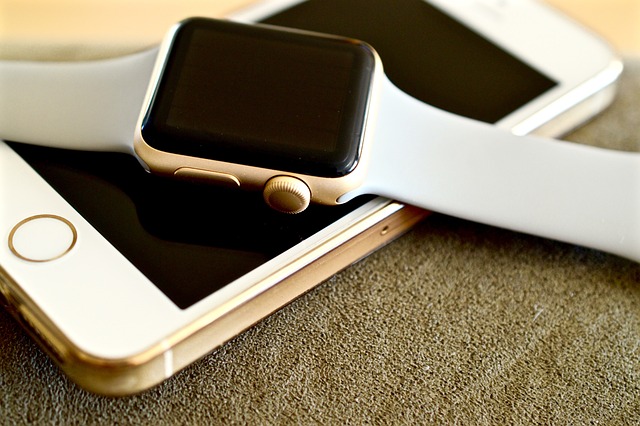
As we step into 2024, wearable technology continues to evolve at a rapid pace, transforming how we interact with the world around us. From smartwatches to fitness trackers and advanced health-monitoring devices, the innovations in this space promise to enhance our daily lives, improve our health, and redefine our understanding of personal technology. In this article, we will explore the key trends and developments expected in the realm of wearable technology this year.
1. Advanced Health Monitoring
One of the most significant trends in wearable technology is the increasing focus on health monitoring. Devices are becoming more sophisticated, allowing users to track a wide range of health metrics beyond simple step counts. For example, many smartwatches now feature advanced sensors that can monitor heart rate variability, blood oxygen levels, and even ECG readings.
According to a report by Statista, the global health and fitness wearable market is expected to reach $62 billion by 2024, highlighting the growing demand for health-centric wearables. As more people prioritize their health, brands are investing in research and development to improve the accuracy and functionality of these devices. Expect to see devices capable of tracking sleep patterns, stress levels, and even hydration metrics as the year progresses.
2. Integration of Artificial Intelligence
Artificial Intelligence (AI) is set to play a significant role in enhancing the capabilities of wearable devices in 2024. By utilizing AI algorithms, wearables can offer personalized insights and recommendations based on user data. For instance, fitness trackers will not only log activity but will also analyze patterns to suggest workouts, recovery times, and dietary adjustments.
AI will also improve user experience by enabling voice commands and smart assistant features. Brands like Apple and Google are already incorporating AI-driven capabilities into their wearables, making them more intuitive and responsive to user needs. The integration of AI will likely lead to more predictive health features, allowing users to anticipate health issues before they arise.
3. Enhanced Battery Life and Charging Solutions
One of the most common complaints about wearable technology is battery life. As devices become more feature-rich, the demand for longer-lasting batteries becomes crucial. In 2024, we can expect manufacturers to focus on developing more efficient battery technologies and innovative charging solutions.
Emerging technologies such as solar charging and energy harvesting are likely to gain traction. For instance, some companies are experimenting with fabrics that can convert kinetic energy from movement into power for wearable devices. This could significantly reduce the need for frequent charging and make wearables more user-friendly.
4. Fashion Meets Functionality
The wearables market is witnessing a growing trend towards stylish designs that don’t compromise on functionality. In 2024, we can anticipate collaborations between tech companies and fashion brands to produce aesthetically pleasing devices.
Smartwatches and fitness trackers will increasingly be designed to suit different styles and occasions, making them suitable for both casual and formal settings. This shift will encourage more people to adopt wearable technology without feeling limited by its utilitarian design . Expect to see innovative materials, colors, and customizable options that cater to diverse consumer preferences.
5. Expanded Ecosystem and Interoperability
As wearable technology continues to grow, the need for interoperability among devices will become increasingly important. In 2024, users can expect a more integrated ecosystem where wearables can seamlessly connect with other smart devices in their homes.
For instance, fitness trackers will likely sync with smart home systems, allowing users to adjust their environment based on their activity levels. A user who has just completed a workout may want to lower the temperature or play relaxing music as they cool down. As brands work towards creating a more cohesive experience across devices, users will enjoy greater convenience and functionality.
6. Focus on Mental Health
Mental health awareness is more prominent than ever, and wearable technology is adapting to address this issue. In 2024, we can expect wearables to incorporate features aimed at promoting mental well-being, such as mindfulness tracking, guided breathing exercises, and stress management tools.
Devices may use biometric data to detect when a user is stressed or anxious and suggest calming techniques or break reminders. This integration of mental health support into wearables could help users maintain a healthier balance between their physical and mental well-being.
7. Sustainability and Eco-Friendly Innovations
With a growing emphasis on sustainability, wearable technology in 2024 will likely focus on eco-friendly materials and production methods. Consumers are becoming more conscious of the environmental impact of their purchases, prompting brands to explore sustainable alternatives.
Expect to see wearables made from recycled materials and designed for longevity. Companies may also adopt circular economy principles, offering recycling programs for old devices to minimize waste.
8. Expanding Market for Kids and Seniors
The wearable technology market is not just for adults; in 2024, we can expect to see an increasing number of wearables designed specifically for children and seniors.
For kids, wearables can offer safety features like GPS tracking and emergency alerts, allowing parents to keep tabs on their children’s whereabouts. For seniors, devices that monitor health metrics, provide reminders for medication, and enable easy communication with caregivers will be crucial. This expansion will create opportunities for companies to cater to diverse demographics and needs.
Conclusion
The future of wearable technology in 2024 promises to be exciting, with advancements that enhance functionality, improve health monitoring, and integrate seamlessly into our daily lives. As technology continues to evolve, wearables will not only serve as tools for fitness and health but will also become essential companions for personal well-being.
With trends leaning toward stylish designs, AI integration, and sustainability, wearables will become more appealing and functional for a broader audience. As we embrace these innovations, the possibilities for improving our lives through wearable technology are virtually limitless.


